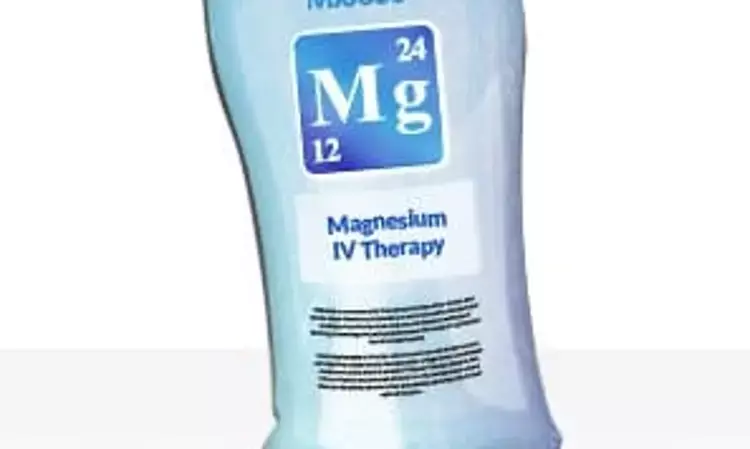- Home
- Medical news & Guidelines
- Anesthesiology
- Cardiology and CTVS
- Critical Care
- Dentistry
- Dermatology
- Diabetes and Endocrinology
- ENT
- Gastroenterology
- Medicine
- Nephrology
- Neurology
- Obstretics-Gynaecology
- Oncology
- Ophthalmology
- Orthopaedics
- Pediatrics-Neonatology
- Psychiatry
- Pulmonology
- Radiology
- Surgery
- Urology
- Laboratory Medicine
- Diet
- Nursing
- Paramedical
- Physiotherapy
- Health news
- Fact Check
- Bone Health Fact Check
- Brain Health Fact Check
- Cancer Related Fact Check
- Child Care Fact Check
- Dental and oral health fact check
- Diabetes and metabolic health fact check
- Diet and Nutrition Fact Check
- Eye and ENT Care Fact Check
- Fitness fact check
- Gut health fact check
- Heart health fact check
- Kidney health fact check
- Medical education fact check
- Men's health fact check
- Respiratory fact check
- Skin and hair care fact check
- Vaccine and Immunization fact check
- Women's health fact check
- AYUSH
- State News
- Andaman and Nicobar Islands
- Andhra Pradesh
- Arunachal Pradesh
- Assam
- Bihar
- Chandigarh
- Chattisgarh
- Dadra and Nagar Haveli
- Daman and Diu
- Delhi
- Goa
- Gujarat
- Haryana
- Himachal Pradesh
- Jammu & Kashmir
- Jharkhand
- Karnataka
- Kerala
- Ladakh
- Lakshadweep
- Madhya Pradesh
- Maharashtra
- Manipur
- Meghalaya
- Mizoram
- Nagaland
- Odisha
- Puducherry
- Punjab
- Rajasthan
- Sikkim
- Tamil Nadu
- Telangana
- Tripura
- Uttar Pradesh
- Uttrakhand
- West Bengal
- Medical Education
- Industry
IV Magnesium, a potential alternative in the migraine cocktail: Study

Migraine is the second most disabling neurologic condition in the United States, resulting in a $27 billion cost due to loss of productivity. IV magnesium may be used as an adjunctive agent for the treatment of migraines, or may serve as a safe alternative when agents such as prochlorperazine or metoclopramide are not appropriate, suggests a study published in The American Journal of Emergency Medicine on September 14, 2021.
Despite migraine being a common disorder, there has yet to be a cure. Several classes of medications have been studied for the treatment of migraine. Metoclopramide, prochlorperazine, and magnesium have been recommended in clinical practise guidelines and have commonly been used for the treatment of migraine in the ED. However, no trial has evaluated all three of these drugs within the same population. Therefore, researchers of the Advocate Christ Medical Center, USA, conducted a study to compare the relative efficacy of magnesium, metoclopramide, and prochlorperazine for the treatment of headache and migraine in the ED.
It was a single-centre, prospective, double-blinded, randomized-controlled, three-armed trial comparing magnesium, metoclopramide, and prochlorperazine for the treatment of migraine. Researchers included 157 patients who presented to the ED with a diagnosis of migraine from August of 2019 to March of 2020. They randomized the patients to receive intravenous magnesium (n=61), prochlorperazine (n=52), and metoclopramide (n= 44). The major outcome assessed was a change in pain from baseline on a numeric rating scale (NRS) evaluated at 30 min after initiation of infusion of study drug. They also evaluated the NRS at 60 and 120 min, ED length of stay, the necessity for rescue analgesia, and adverse effects.
Key findings of the study were:
• Hypertension and migraines were the most common comorbidities, with a third of the patients reporting an aura.
• Upon evaluation, the researchers found a decrease in NRS at 30 min of three points across all three treatment arms.
They noted that the median decrease in NRS (IQR) at 60 min was −4 (2–6) in the magnesium group, −3 (2–5) in the metoclopramide group, and −4.5 (2–7) in the prochlorperazine group.
• They found no statistically significant differences in ED length of stay, rescue analgesia, or adverse effects. Reported adverse effects were dizziness, anxiety, and akathisia.
• They also found no significant difference in NRS at 30 min between magnesium, metoclopramide and prochlorperazine.
The authors concluded, "There was no statistically significant difference in change in median pain scores between IV magnesium, metoclopramide, and prochlorperazine. However, IV magnesium was not inferior to prochlorperazine or metoclopramide at 30 min when treating headaches and migraines in the ED—despite patients requiring greater rescue analgesia."
They further added, "Although prochlorperazine may be more effective at controlling pain at one hour, it may also result in greater adverse effects. IV magnesium may be used as an adjunctive agent for the treatment of migraines, or may serve as a safe alternative when agents such as prochlorperazine or metoclopramide are not appropriate."
For further information:
DOI: https://doi.org/10.1016/j.ajem.2020.09.033
Medical Dialogues Bureau consists of a team of passionate medical/scientific writers, led by doctors and healthcare researchers. Our team efforts to bring you updated and timely news about the important happenings of the medical and healthcare sector. Our editorial team can be reached at editorial@medicaldialogues.in.
Dr Kamal Kant Kohli-MBBS, DTCD- a chest specialist with more than 30 years of practice and a flair for writing clinical articles, Dr Kamal Kant Kohli joined Medical Dialogues as a Chief Editor of Medical News. Besides writing articles, as an editor, he proofreads and verifies all the medical content published on Medical Dialogues including those coming from journals, studies,medical conferences,guidelines etc. Email: drkohli@medicaldialogues.in. Contact no. 011-43720751


